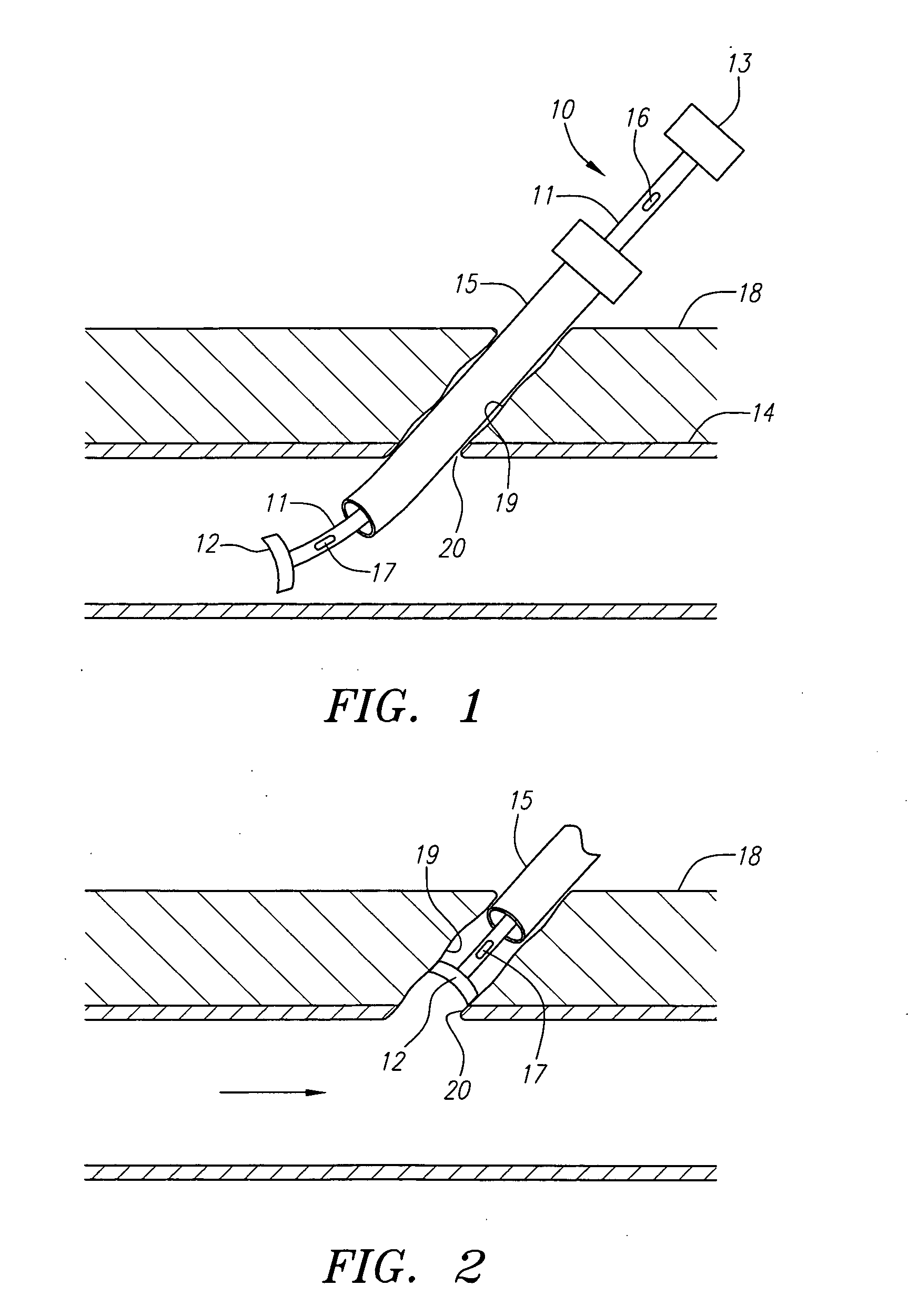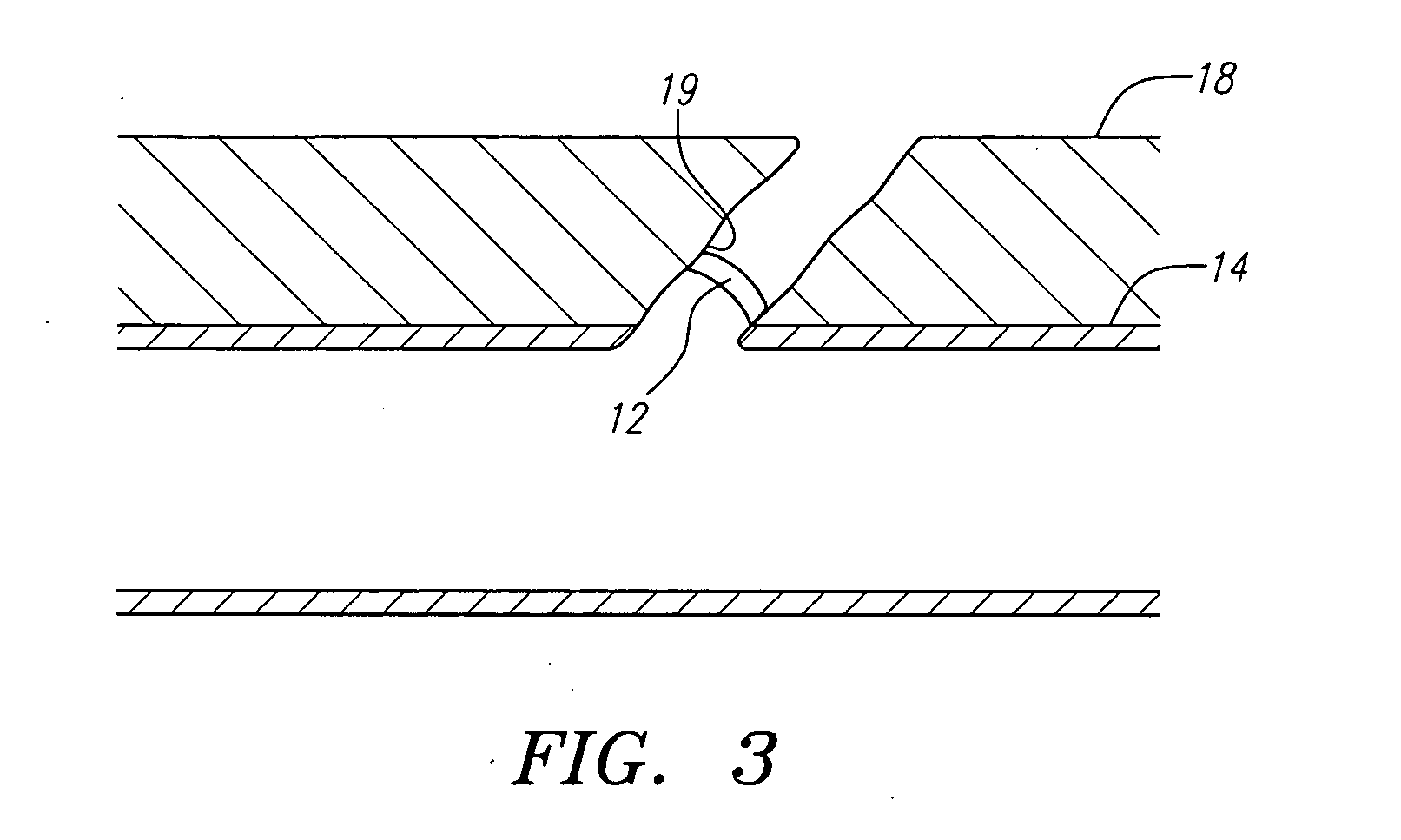Locator and closure device and method of use
a technology of a closure device and a device, which is applied in the field of apparatus and methods for sealing or closing passages, can solve the problems of time-consuming and expensive procedures, requiring as much as an hour of the physician's or nurse's time, and uncomfortable for patients
- Summary
- Abstract
- Description
- Claims
- Application Information
AI Technical Summary
Benefits of technology
Problems solved by technology
Method used
Image
Examples
Embodiment Construction
[0023] As can be seen from FIG. 1, the combined locator-sealing device of the present invention comprises tubular elongated member 11, sealing member 12, and optimally, handle 13. The device 10 is shown as it would be when initially installed with its distal region in the lumen of blood vessel. As shown, the device 10 has been introduced through introducer sheath 15 which may have been used in a previous catheterization procedure.
[0024] The elongated member 11 of device 10 has an internal lumen (not shown) which communicates with proximal port 16 and with distal port 17. The proximal port 16 is separated from distal port 17 sufficiently to permit proximal port 16 to be outside of the patient's body when distal port 17 is within the lumen of blood vessel 14. Thus, as shown in FIG. 1, the proximal port 16 is proximal of the patient's skin 18 and device 10 extends through introducer sheath 15 which is located in puncture wound tract 19 and extends through puncture 20 in the wall of th...
PUM
 Login to View More
Login to View More Abstract
Description
Claims
Application Information
 Login to View More
Login to View More - R&D
- Intellectual Property
- Life Sciences
- Materials
- Tech Scout
- Unparalleled Data Quality
- Higher Quality Content
- 60% Fewer Hallucinations
Browse by: Latest US Patents, China's latest patents, Technical Efficacy Thesaurus, Application Domain, Technology Topic, Popular Technical Reports.
© 2025 PatSnap. All rights reserved.Legal|Privacy policy|Modern Slavery Act Transparency Statement|Sitemap|About US| Contact US: help@patsnap.com



